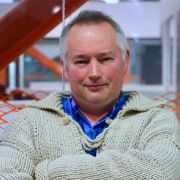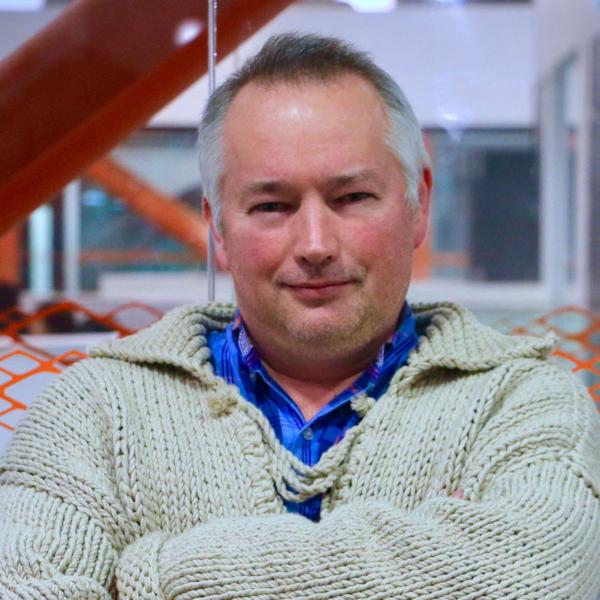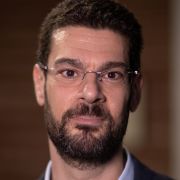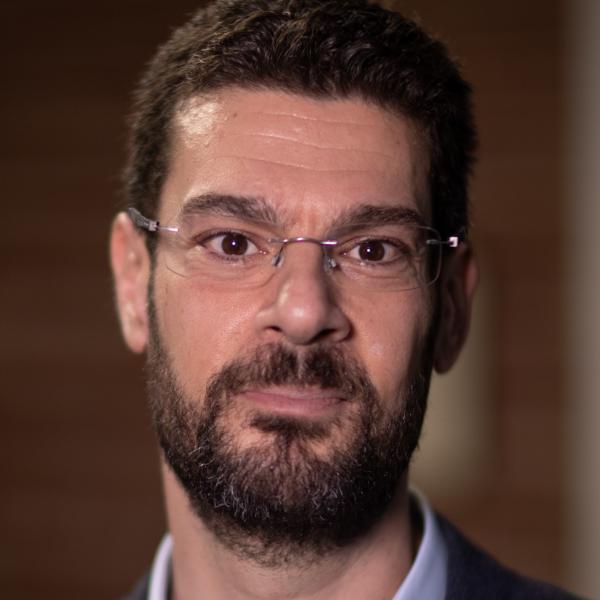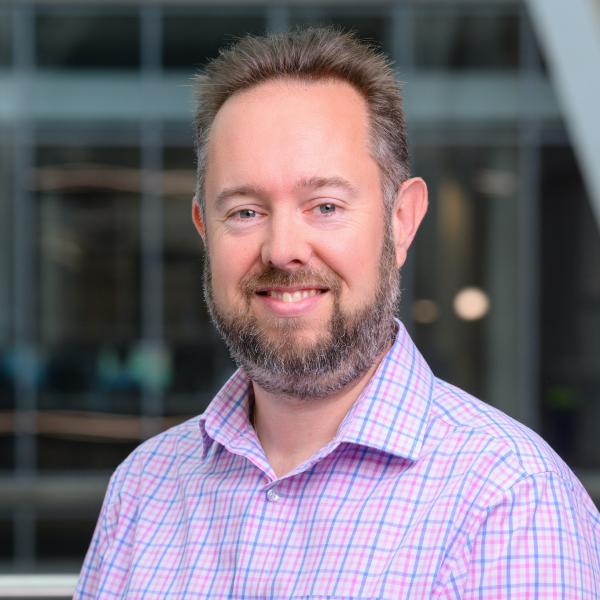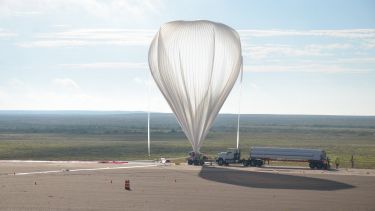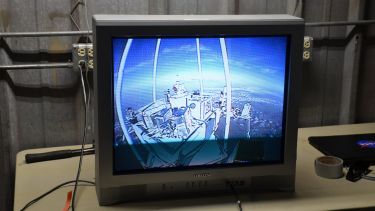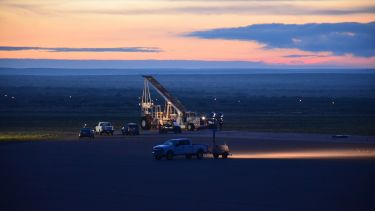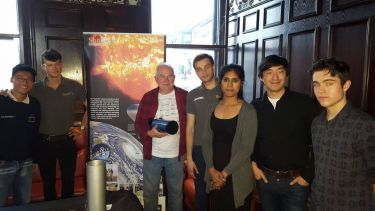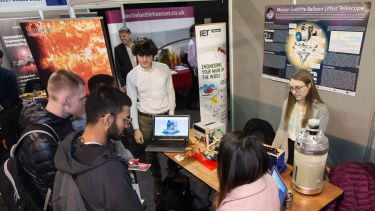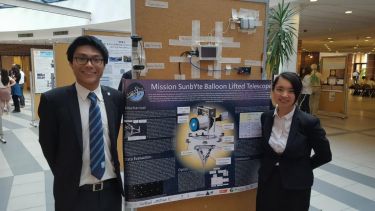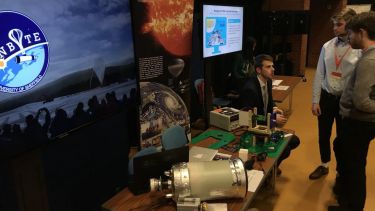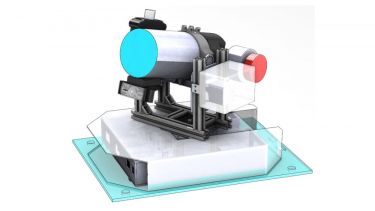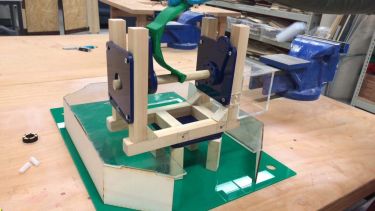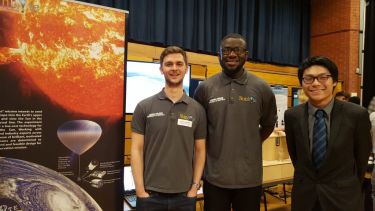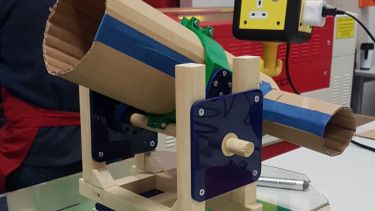SunbYte II
Due to the progress made in SunbYte I, SunbYte II was born. SunbYte II was flown on 4 September 2018 under the High Altitude Student Payload (HASP) programme run by NASA.
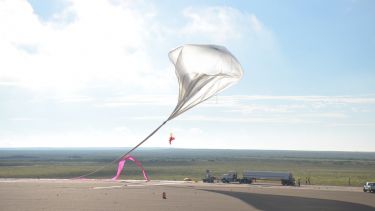
HASP programme
The High Altitude Student Payload is a programme run by National Aeronautics and Space Administration (NASA).
The High Altitude Student Platform is designed to carry up to twelve student payloads to an altitude of about 36 kilometres with flight durations of 15 to 20 hours using a small volume, zero pressure balloon.
The payloads carried by HASP are designed and built by students and are used to flight-test compact satellites or prototypes and to fly other small experiments.
Team
Project leader: Iakov Bobrov
Electrical team leader: Gianni Heung
Mechanical team leader: George Robinson
Systems engineer: Yun Hang Cho
Solar physicist: Alex Hamilton
Mechanical team:
Arthur Cunningham
Joycelyn Fontanilla
Brandon O'Connell
Tom Holford
George Robinson
Theo Glashier
Electrical team:
Sagar Shah
Yadav Dosieah
Federico Orrego
Abdulla Omaruddin
Academic advisors
Dr Ben Snow
School of Mathematics and Statistics, the University of Sheffield
Dr Eamon Scullion
Department of Mathematics, Physics and Electrical Engineering, Northumbria University
Dr Sergiy Shelyag
Department of Mathematics, Physics and Electrical Engineering, Northumbria University
Dr Dave Jess
Department of Mathematics and Physics, Queens University Belfast
Dr Sergio Zharkov
Department of Physics and Astrophysics, University of Hull
Dr James McLaughlin
Department of Mathematics, Physics and Electrical Engineering, Northumbria University
Dr Richard Morton
Department of Mathematics, Physics and Electrical Engineering, Northumbria University
Professional support
Mrs Jaye Taylor
Department of Automatic Control and Systems Engineering, the University of Sheffield
Dr Everth Hernandez-Nava
Department of Materials Science and Engineering, University of Sheffield
Ms Megan Hobbs
Department of Automatic Control and Systems Engineering, the University of Sheffield
Mr Mark Wrigley
Alternative Photonics
Dr Guillaume Zoppi
Department of Mathematics, Physics and Electrical Engineering, Northumbria University
Activities and updates
- Watch the team describe how our telescope works and find out the differences between Sunbyte and a ground-based telescope.
- Launch day, attempt two, 4 September 2018
- The team recovering the gondola, parachute and payloads.
- A successful launch, the telescope is moving and working as we would expect.
- Launch video
- Waiting to fly, CSBF team preparing the payload.
- Preparation for launch
- Preparation for launch
- Launch roll out
- Launch day, attempt one, 1 September 2018
- Flight scrubbed due to the weather
- Leaving for launch site
- Tour of the facility
- Integration complete, now to focus on ensuring SunbYte is ready to launch, 23 August 2018
- Arrived safely with the payload at NASA CSBF, 25 July 2018
- The ground station system is now operational and ready to receive and interpret data. The ground station is a key part of the mission as we need to know what is going on when we are 36, 000 ft below the telescope. 19 June 2018
- The gimble responsible for moving the telescope to point towards the sun is now operational. With a lot of code and even greater amount of brain power required, the problems with the gimble are resolved and finally completed. 19 June 2018
- Presentation at Pint of Science, alongside MoonWorks and SunrIde, Sheffield, 18 May 2018
- Presentation at Get Up to Speed, Magna Science Adventure Centre, Sheffield, 18 April 2018
- Poster presentation and one minute pitch at the European Space Agency's second symposium on Space Educational Activities, Budapest, Hungary, 12 April 2018
- British conference of undergraduate research, 12-13 April 2018
- SunbYte II CAD model, 23 March 2018
- SunbYte II prototype for HASP, 6 March 2018
- SURE showcase, the University of Sheffield, 13 February 2018
- SynbYte II cardboard prototype

